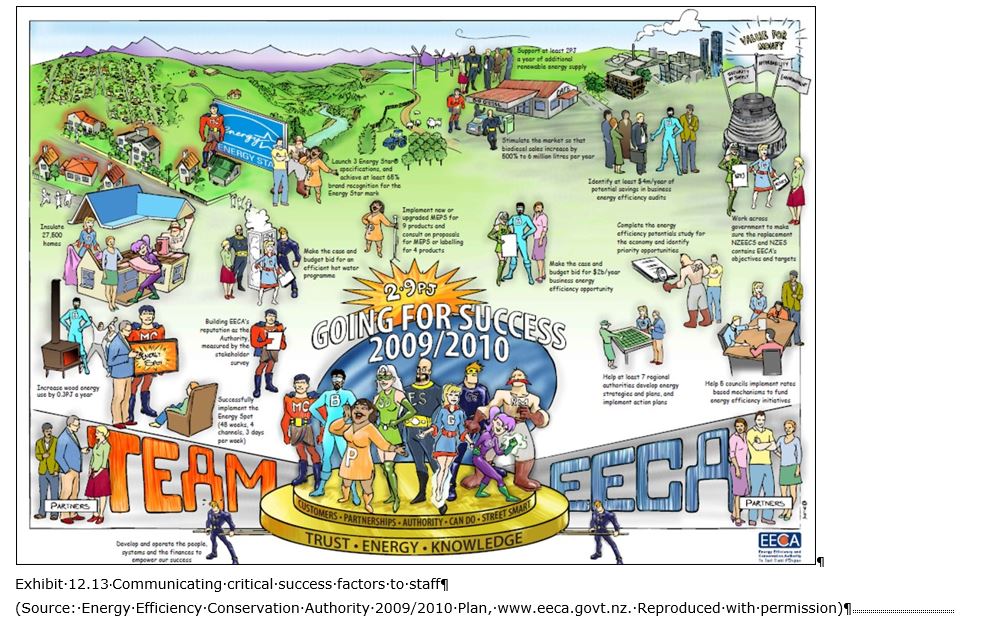Your cart is currently empty!
Four tasks to undertake to ascertain your organisation’s critical success factors
To help organisations around the world find their critical success factors (CSFs), I have developed a four-task process.
Task 1: Wording the success factors and the external outcomes
The KPI team needs to review the strategic documents in their organization covering the past 10 years, then extract and develop success factors from these documents. You may find an old strategic document written by an executive, long since moved on, which could prove very helpful because the success factors are still relevant.
The KPI team should interview as many of the organization’s “oracles,” the wise men and women who everybody refers to for advice, as possible, along with the entire C-suite. From this information you will be able to come up with a list of success factors. To assist, I have provided a list of common operational success factors in Appendix 3.
Gathering a selection of experienced managers, who will be attending the CSF workshop, train them in how to word success factors. The wording is very important and should meet the SMART criteria attributed to Peter Drucker.[i] While Drucker was addressing goal setting, the same rules apply to success factors. Success factors need to be:
- Specific—A statement that avoids using meaningless, empty words sometimes referred to as “Weasel words.” Avoiding empty words, that are so common in management terminology, is not as easy as you might think. As we move up the management ladder, we increasingly use empty words having heard them used so often. Common weasel words include:
Accelerate, adaptive, balanced, barriers, best practice, collaborative, dynamic, effective, efficient, end-user, empowered, holistic, improvements, inclusive, innovative, integrity, optimized, outcomes, outputs, quality, recognition, reliability, renewal, responsibility, significant, solution, special, synergies, targeted, transformation, value-added, well-being, winning, world-class
The term “increased profitability from our product range” is an empty statement. There is no guide to how this is to be achieved. Whereas “timely departure and arrival of planes 24/7” is clearly specific.
- Measurable—A statement with words that lend themselves to measurement. If you could not instantly think of a measure or two, then it is odds-on that it does not fit this criterion. “Timely departure and arrival of planes 24/7” is clearly measurable.
- Achievable—A statement that talks to the staff in a clear and concise way, making the activity achievable. For example, “timely departure and arrival of planes 24/7” is clearly achievable.
- Relevant— A statement focused enough that it is relevant to staff in the organization. “Timely departure and arrival of planes 24/7” is clearly relevant to many operational teams: flight crew, front desk, baggage handlers, cleaners, fuel and food suppliers.
- Time sensitive— A statement focused on the here and now. “Timely departure and arrival of planes 24/7” is clearly a 24/7 imperative for an airline.
[i] Peter F. Drucker, The Practice of Management (New York: HarperCollins, 1954).
Task 2: Determining the operational critical success factors in a two-day workshop
From my experience in this area, most organisations will need to run a two-day workshop attended by oracles, as well as many of the senior management team as possible. It is important to have experienced staff attend this workshop, as you are trying to ascertain the organisation’s success factors and then determine which ones are critical. It is not a workshop for new staff, no matter how bright they are.

Task 3: Presenting the Critical Success Factors to the staff
Once the CSFs have been ascertained, there is a need to communicate them to those who have not been part of the process. The senior management team members, managers, and staff who have not attended the CSF workshop will need to understand how they came about and their significance.
The CSFs need to be discussed with employee representatives and conveyed to staff to maximise the benefits once the CSFs have been ascertained. If staff members are told what is important, they can align their daily activities to enhance their contribution.

Task 4: The CSFs on the wall in every workplace
This is an important step; however, from my observation it is often overlooked. The only way the CSFs will make a change in an organisation is when staff live, breathe, and own the CSFs. For that to happen, the CSFs need to be communicated and agreed in a meaningful way rather than just written up as a list. I came across a brilliant example of how to communicate to staff what is important. The company, in question, prepared a cartoon representation of what it wanted to achieve in the year, and staff pinned it on their office walls. It was printed on A3 paper in full colour. I believe this concept is an ideal way to present the CSFs to staff.
Using performance measures which are not linked to the critical success factors (CSFs) of your organisation can severely hamper your ability to manage business performance. Read more “Finding your organisation’s critical success factors implementation guide” on the website.
This information has been extracted from David Parmenter’s Key Performance Indicators (4th Edition) which is the highest rated KPI book on Amazon.

To understand more visit Do you know your organisation’s critical success factors?
Purchase my latest implementation guides which are currently on sale:
How to implement winning KPIs (180 page Whitepaper + electronic templates)
Finding your Organization’s Critical Success Factors – implementation guide (Whitepaper 115 pages+ electronic templates)
and buy the Database of Measures and Associated Success Factors 4th Edition